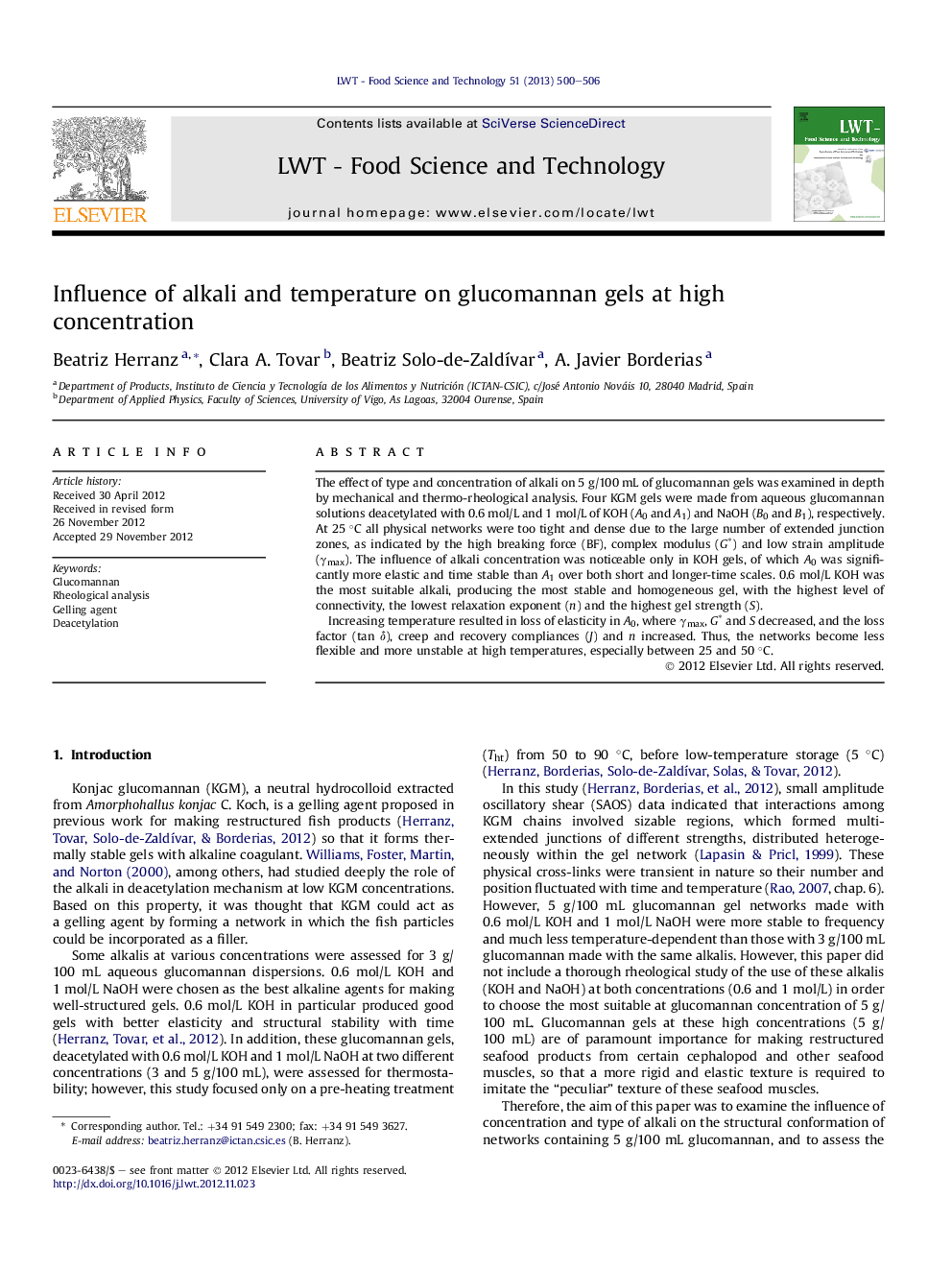| Article ID | Journal | Published Year | Pages | File Type |
|---|---|---|---|---|
| 4563950 | LWT - Food Science and Technology | 2013 | 7 Pages |
The effect of type and concentration of alkali on 5 g/100 mL of glucomannan gels was examined in depth by mechanical and thermo-rheological analysis. Four KGM gels were made from aqueous glucomannan solutions deacetylated with 0.6 mol/L and 1 mol/L of KOH (A0 and A1) and NaOH (B0 and B1), respectively. At 25 °C all physical networks were too tight and dense due to the large number of extended junction zones, as indicated by the high breaking force (BF), complex modulus (G∗) and low strain amplitude (γmax). The influence of alkali concentration was noticeable only in KOH gels, of which A0 was significantly more elastic and time stable than A1 over both short and longer-time scales. 0.6 mol/L KOH was the most suitable alkali, producing the most stable and homogeneous gel, with the highest level of connectivity, the lowest relaxation exponent (n) and the highest gel strength (S).Increasing temperature resulted in loss of elasticity in A0, where γmax, G∗ and S decreased, and the loss factor (tan δ), creep and recovery compliances (J) and n increased. Thus, the networks become less flexible and more unstable at high temperatures, especially between 25 and 50 °C.
► A conformational study of 5 g/100 mL KGM gels made with NaOH and KOH at 0.6/1 mol/L was done. ► Gels with NaOH showed a slightly higher WBC and less time-stable network. ► Gels deacetylated with 0.6 mol/L KOH showed more ordered and time independent structure. ► A deeply thermostability study of 0.6 mol/L KOH was done. ► At ≥50 °C resulted in a disaggregation process producing a lost of gel elasticity.
